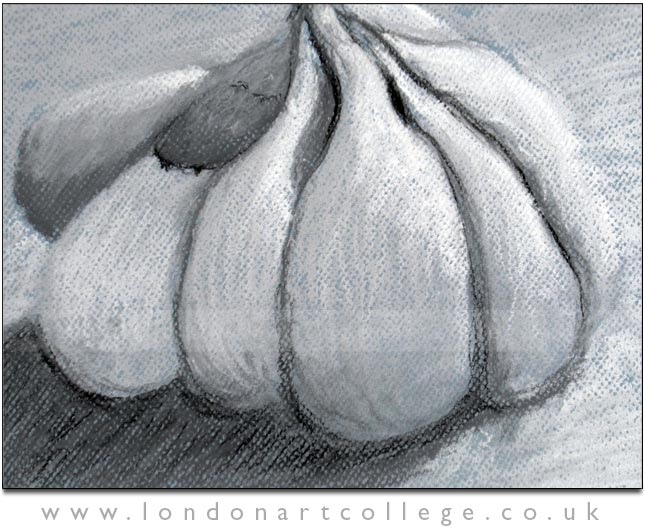Student Ann Edwards is studying our Pastels Online Art Course and has been experimenting with the texture and tonal ranges of a garlic bulb. Ann had created a wonderful study here and we particularly like the way Ann has not defined the outline of the garlic bulb on the right and left hand side.
When learning how to draw or paint, its often quite difficult, not only to describe everything within the scene correctly, but also colour mix and choose the correct colours to use. There are so many things to consider, students often find it difficult to deal with a multitude of things at once. With this in mind students are often asked to complete a study of an object or subject using greys and whites alone.
It can be very helpful to the student to familiarise themselves with the object and subject before working in colour. They will have overcome many questions they will have asked themselves whilst tackling the subject. This can also help improve their observational skills:
- What is the most aesthetically pleasing angle to view the object at?
- Does the object have a smooth or rough surface texture?
- Which direction is the light coming from?
- How many light sources are there hitting the object?
- On the object, where is the lightest light?
- Where is the darkest shadow?
- Can you see any reflective light?
- Are the objects edges defined or are some of the tones similar to its surroundings?
etc
So in this instance with the garlic, we have the light and shade to master, the deep shadows to build with dark tone, introduce weight of line, describe the surface texture keeping in mind the objects shape and form along with making sure the object is sitting firmly on the table with its shadow.
So you can see by overcoming all of these things in your first preliminary drawing, when you then create a colour version, you will be much more prepared and informed about the subject.
Why don’t you have a go for yourself? This can be achieved using any subject, in any medium. Have fun!

